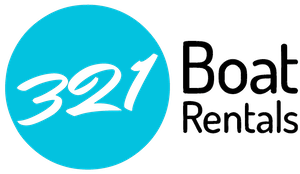The bottlenose dolphin is one of the most popular and well-known creatures of the sea.
A trip to a facility where bottlenose dolphins reside will undoubtedly feature a bottlenose dolphin show where these intelligent mammals perform complex tricks guided by human trainers. While kids and adults alike enjoy seeing these dolphins display their skills in these shows, there’s nothing like seeing these beautiful aquatic animals in their natural habitat. The Indian River Lagoon features hundreds of bottlenose dolphins that you can get up close to when taking a boat out from 321 Boat Club.
The Indian River Lagoon is a 156-mile estuary that stretches from the Ponce de Leon Inlet in Volusia County, Florida to the Jupiter Inlet in Palm Beach County, Florida. The width of the water varies anywhere from one-half mile to five miles and has an average depth of around three to four feet. Featuring a total surface of 353 square miles, the Indian River Lagoon spans six counties; Volusia County, Brevard County, Indian River County, St. Lucie County, Martin County, and Palm Beach County. In 1990, the lagoon was named an Estuary of National Significance by the United States Environmental Protection Agency.
The lagoon is made up of four bodies of water; the Mosquito Lagoon, the Indian River, the Banana River, and the St. Lucie Estuary. It features five inlets; the Ponce de Leon Inlet, the Sebastian Inlet, the Ft. Pierce Inlet, the St. Lucie Inlet, and the Jupiter Inlet. It also features navigation locks at Port Canaveral which allows seawater to enter the lagoon.
One of the animals that can be frequently seen in the Indian River Lagoon is the bottlenose dolphin. Bottlenose dolphins are typically around six to 12 feet and weigh anywhere from 300 to 1,400 pounds with males weighing significantly more than females. They usually travel in groups of about 10 to 25 so when you see one of these animals, you are likely to see many more.
As you glide across the water during your boating adventure, you may find dolphins swimming around with you. These speedy mammals can swim at 22 miles per hour. While bottlenose dolphins have the ability to dive into water depths of 3,000 feet and can hold their breath for up to about seven minutes, they need to come to the surface to breathe so they generally stay closer to the surface of the water. They also don’t breathe automatically like humans do so they have to stay awake at all times to remind themselves to head to the water’s surface for air. Bottlenose dolphins are covered with blubber that serves as a way to maintain their body heat as well as protecting themselves against predators they may encounter in the wild like killer whales and large sharks.
The Indian River Lagoon features and estimated 300 bottlenose dolphins. These animals typically live in harbors, bays, gulfs, and estuaries that are in temperate and tropical waters so the lagoon’s environment is quite ideal for them. The dolphins that reside in the Indian River Lagoon rarely, if ever, leave the lagoon while they reside there. They typically end up residing in specific areas in either the northern part of the lagoon or the southern part.
Studies on the bottlenose dolphins of the Indian River Lagoon have shown that there is a difference in the health of the dolphins depending on where they reside. While it’s still unknown exactly why it’s this way, those dolphins that reside in the northern part of the lagoon tend to have significantly greater health issues that those the reside in the southern portion of the lagoon.
One of the best parts about boating on the Indian River Lagoon is the ability to explore the animals that reside in its waters in their natural habitat. Given that it is the most biodiverse estuary in North America, over 2,200 different species of animals reside in the lagoon. The bottlenose dolphin is one of the best known and loved water-residing animals, and the Indian River Lagoon features an estimated 300 in total. A boating trip along the waters of the lagoon may find you face-to-face with several of these beautiful animals. If you are looking at boating on the Indian River Lagoon, join 321 Boat Club for year-round boating.
